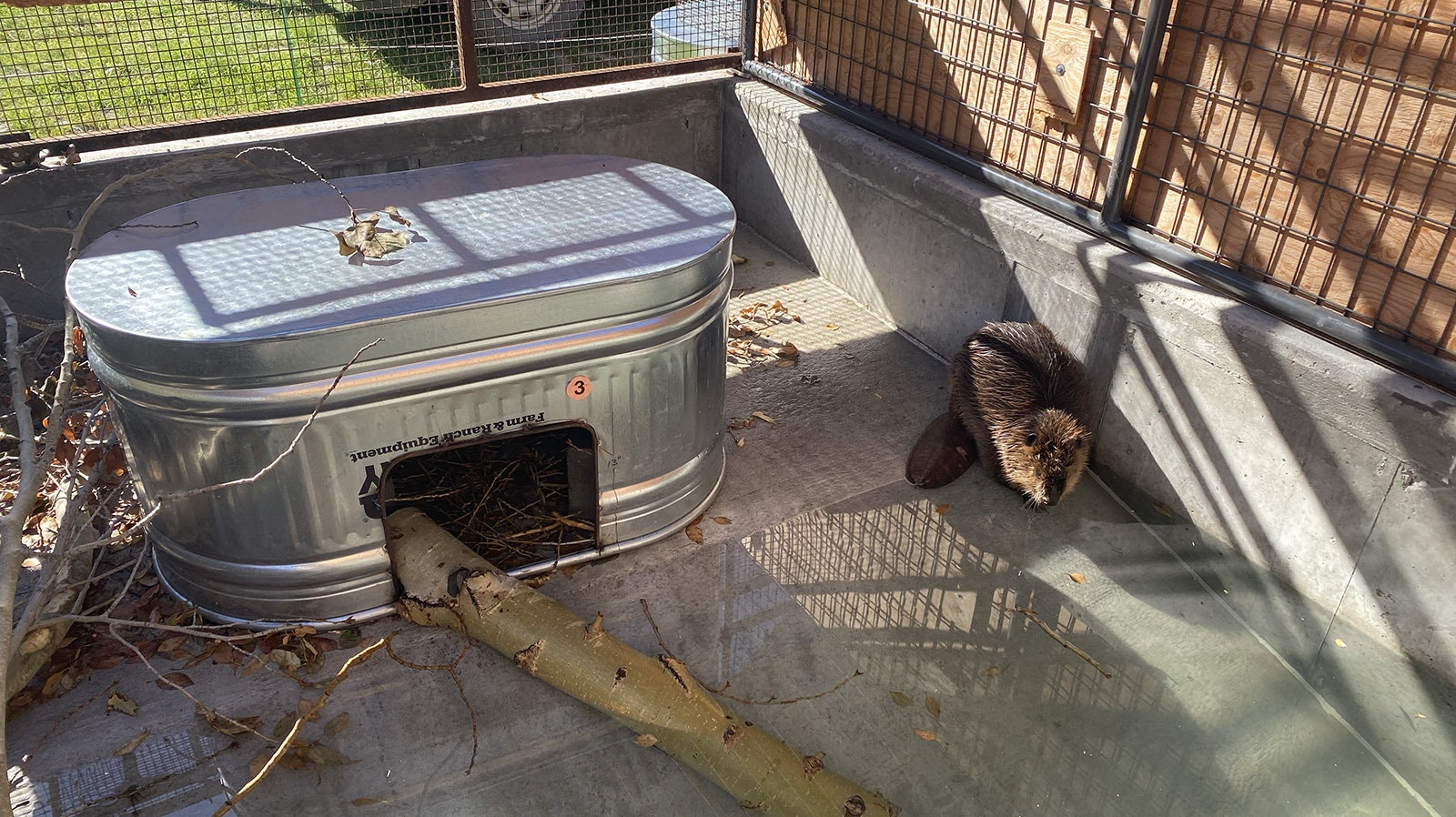A halfway house for delinquent beavers is under construction at the Wyoming Game and Fish facility in Cody.
The beavers that will be temporarily housed there aren’t hardened criminals, they’re just doing the job nature intended them to do. But that work often includes knocking down shade trees around homes, building dams and sometimes plugging culverts and flooding roads.
What makes beavers a nuisance is when their work conflicts with civilization. This new relocation facility will temporarily house them until they can be moved to more suitable neighborhoods.
Jenny DeSarro, executive director of Wyoming Untrapped, a Jackson non-profit, said beavers provide a “huge” ecological value to Wyoming.
“We feel like it’s a win-win for everybody when we can keep beavers on the landscape,” she said. “Beaver relocation is a better alternative to lethal removal.”
DeSarro said beavers help replenish aquifers and create habitat for many other animals including moose, waterfowl and fish.
Wyoming Untrapped contributed about $10,000 to the construction of the new facility. It is expected to be open for business by next spring, she said.

A Wyoming Icon
Beavers are one of the animals that played a significant role in Wyoming history. According to WyoHistory.org, western Wyoming was the center of the fur trading industry in the 1820s and 1830s. The first fur trappers came to the Jackson area in about 1810.
By the time the demand for beaver pelts petered out in the mid 1830s, the region was mostly trapped out. Demand for beaver pelts dwindled when silk hats came into fashion.
By that time, it’s estimated that Wyoming wetlands gave up hundreds of thousands of beaver pelts. Today, it’s estimated that Wyoming is home to about a quarter of the beavers that lived here prior to the fur trapping era.

An Existing Beaver Hotel in Jackson
Cody Pitz is a wildlife biologist and beaver expert for the Jackson non-profit, Wyoming Wetlands. Pitz is the warden for the non-profit's own beaver jailhouse located near Jackson. The facility opened last spring and has since provided temporary housing for about 30 beavers, he said.
The relocation facility can hold four family groups, which can include as many as ten animals each. It’s important for the relocation process to keep the families whole as much as possible, he said. That way they tend to stay together after a suitable place for relocation is found.
The Wyoming Wetlands facility has four 330-gallon pools of water for the beavers to use and keep cool during hot weather. Pitz said beavers don’t perspire so keeping them shaded and providing water prevents overheating.
The facility also has steel dens for the beavers to live in and to help recapture them for relocation.
“How it works is we take nuisance animals that would otherwise be killed and we offer to live trap them and relocate them,” he said. “We work with Wyoming Game and Fish and the Bridger-Teton National Forest to relocate them farther away from people.”
Pitz said they are careful in selecting proper areas for relocation to avoid future conflicts.
“We are not just deciding on our own where to relocate nuisance beavers,” he said. “We work with government agencies in deciding where they (beavers) are needed.”
Wyoming Wetlands also works with local landscapers to obtain aspen trees to feed the captive beavers. Aspen is their favorite food, but Pitz said they also eat apples, squash, corn and potatoes.
The non-profit contracts with local trappers who catch problem beavers in live traps.

New Cody Facility
The new beaver husbandry facility in Cody is designed with three primary considerations. First is efficiency of handling with minimal stress to the animals. Second is the well-being of the animals while they are in captivity and third is ease of maintenance and cleaning.
According to Wyoming Untrapped, the facility will include four fenced units, each consisting of a fenced concrete raceway, a feeding area and a den. A concrete den with underwater access will be constructed at the end of each raceway. The dens are lined with a removeable steel crate in order to remove beavers for transport.
Cody is an ideal location for the facility because it’s located in an area where conflicts between beavers and people consistently occurr. It has the potential to provide a source of beavers for adjacent regions as well, according to Wyoming Untrapped.
“The project would serve as a pilot to demonstrate the efficacy of this approach with the long-term goal of establishing other facilities in strategic locations in the state,” according to Wyoming Untrapped.
Other partners in the $80,000 project include Wyoming Tourism for Tomorrow and Mary Rumsey.





